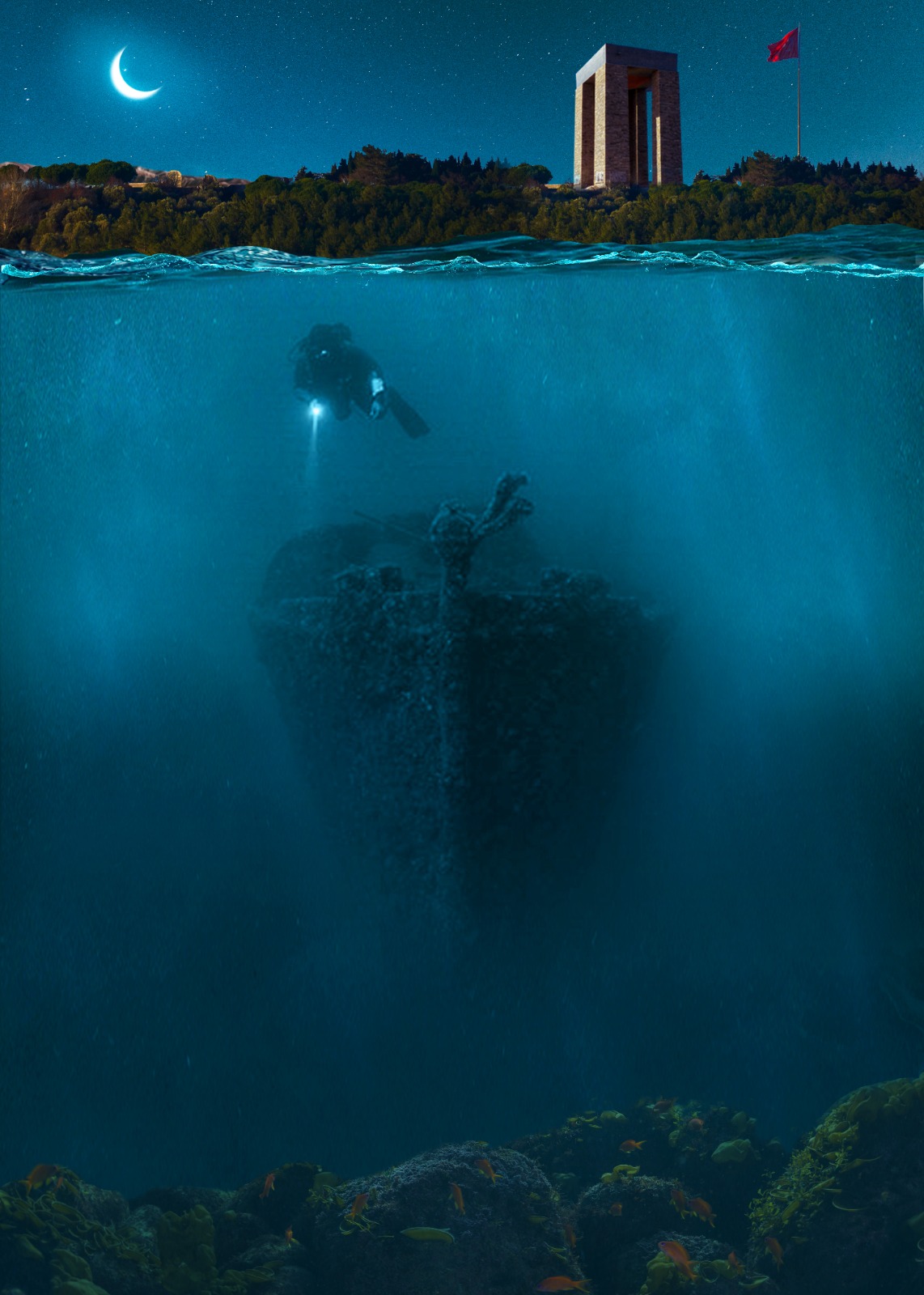Gallipoli Historical Underwater Park became the new route of diving enthusiasts with its wrecks bearing the traces of war.
Shipwrecks from the First World War, which were brought to diving tourism in 2021 with the initiatives of the Çanakkale Wars and Gallipoli Historical Site Presidency of the Ministry of Culture and Tourism, have become one of the favourite routes of those who want to explore the history underwater.
The Gallipoli Peninsula is now attracting attention not only with the martyrdoms and monuments on land, but also with its shipwrecks bearing the traces of 109 years ago underwater.
The Gallipoli Historical Underwater Park, where the warships sunk in the historical Gallipoli Peninsula are located, “HMS Majestic”, “Ertuğrul Bay Massena and Saghalien shipwrecks”, “Helles Barges”, “Tekke Bay (W Beach) wrecks”, “Arıburnu Barge”, “Küçükkemikli Barges”, “Arıburnu Layter”, “Lundy”, “HMS Louis”, “S. S. Milo”, “Tuzla”, “Submarine Mania Network”, “Bebek Rocks” and “HMS Triumph”.
“Mesudiye Armoured Ship”, the first shipwreck of Çanakkale Wars
The Battleship Mesudiye, which made history as the first shipwreck of the Çanakkale Wars, was ordered to the British Thames Iron Work Company in 1872 with the Battleship Memduhiye as a result of Sultan Abdülaziz’s (1861-1876) policy to modernise the Ottoman Navy.
The construction of the battleship, which started in 1873, was completed and launched in 1875. On the morning of 13 December 1914, the British submarine “HMS B11”, commanded by Lieutenant Norman Douglas Holbrook, torpedoed the Battleship Mesudiye after passing through minefields.
Of the 598 crew members on board, 10 officers and 25 privates were martyred. Many of the weapons on board were salvaged and used to strengthen the defence of the Dardanelles.
The battery, named Mesudiye Bastion in honour of the ship, helped sink the French battleship Bouvet in March 1915.
“HMS Lundy” is one of the rare wrecks left in one piece
The British seized the 1908-built 188-ton trawler “HMS Lundy”, one of the rare shipwrecks remaining in one piece in the depths of Çanakkale, during the First World War and sent it to war.
“HMS Lundy”, which served as the minesweeper of England in the war, was sunk on 16 August 1915 by the British who realised that they could not cross the Dardanelles.
Colourful sponges, groupers, grouper, mackerel, weasel, black sea bass, lobster, insects, sea rabbits and moray eels can be seen in the “HMS Lundy” wreck, which is located at a depth of 27 metres in Suvla Bay between Büyük Kemikli and Küçük Kemikli.
The British submarine “HMS E 14” is known as the second submarine to infiltrate the Marmara Sea after the “B11” during the Çanakkale Wars.
The submarine “HMS E 14”, which was shot down by the Turkish coastal artillery at Kumkale and has been a silent witness of history in the depths of the Bosphorus for 109 years, entered the Dardanelles on 28 January 1918 to attack the “Yavuz” ship of the Ottoman Navy, which was stranded at Cape Nara.
Meanwhile, the submarine “HMS E 14”, which was caught in the nets at Cape Nara, was forced to surface by underwater bombs. The captain of the submarine, who wanted to escape from here, retreated and tried to escape towards the Aegean Sea, but was sunk by cannon fire around Kumkale.
The wreckage of the submarine “HMS E 14”, in which only 5 of the crew survived and 27 people died, was not found for a long time.
Turkey’s most famous shipwreck “HMS Majestic”
At the outbreak of World War I, “HMS Majestic” joined the United Fleet for the Battle of Gallipoli.
The 128-metre-long battleship was torpedoed and sunk by the German submarine “U-21” under the command of Otto Hersing on 27 May 1915, while it was shelling Turkish troops at Seddülbahir.
Turkey’s most famous shipwreck located at a depth of 18-23 metres off Seddülbahir, which was forbidden to dive for many years, was opened to diving with the initiatives of the Çanakkale Wars Gallipoli Historical Site Presidency.
The destroyer-type “HMS Louis Frigate”, which was damaged in a collision with a tugboat during the Gallipoli War and drifted and settled on the sand, was tried to be rescued but without success.
The shipwreck, which was found at a depth of 14 metres at Cape Büyük Kemikli, is now a perfect location for photographing the diversity of fish and living creatures.
